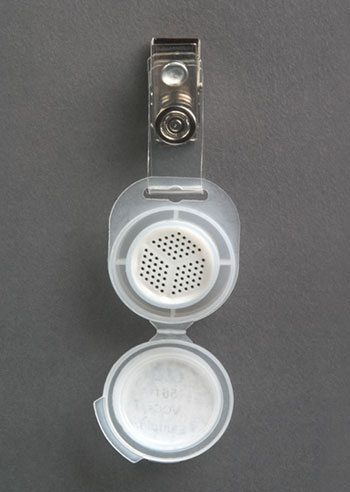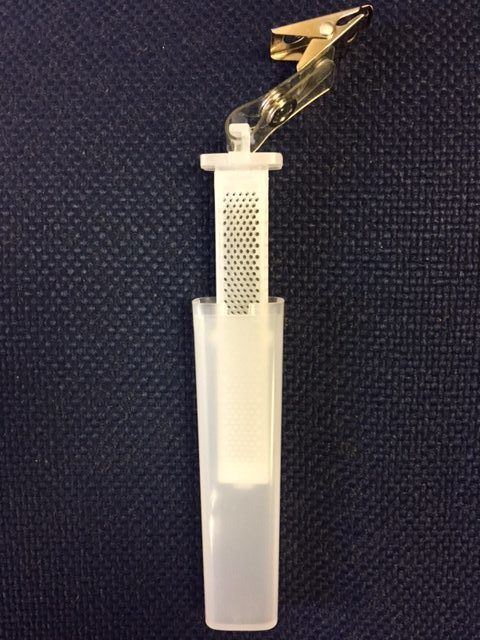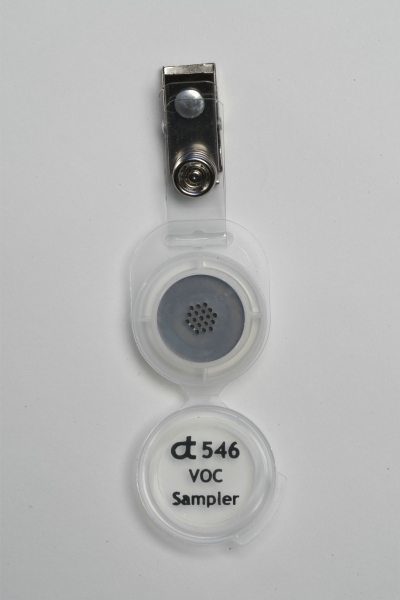This is actually a more difficult question than it would seem. Let’s take the least complex situation. You are monitoring for one chemical for 15 to 480 minutes. To determine which is the best monitor, go to our Sampling Guide. We have bolded the chemical/badge combination we recommend. Easy, right? These recommendations are primarily based on the PEL of the chemical.
Choosing the 525:
If the PEL is low (less then 10 ppm), we recommend the 525. The 525 will give the lowest reporting limit. It will also have the least amount of capacity. However, capacity shouldn’t be an issue, because the capacity will be exceeded at concentrations well above the PEL. If you are above the PEL, it does not matter if you exceeded the badge’s capacity. The lower reporting limit means better accuracy at lower concentrations. In addition, the 525 is great for IAQ monitoring where low concentrations are expected and customers want reporting limits as low as possible.
Choosing the 546:
If the PEL is high (greater than 200 ppm), we recommend the 546. The reporting limit will be higher, but customers do not need low reporting limits when the PEL is so high. It’s more important to have greater capacity because the concentrations during sampling can be very high. Rarely is the 546 badge good for STEL monitoring.
Choosing the 566:
The 566 is good for everything else. In most cases, the answer is the 566 badge. The other badges are for extremes.
Getting Complex:
The recommendations above are based on a single chemical request. But what if you are monitoring for benzene and IPA? We recommend the 525 for benzene and the 546 for IPA. So do you use the 525? The 546? Or split the difference and use the 566? The answer lies in what you believe is present at the sampling locations. If you have 500 ppm of IPA, then the 525 is not a good choice. The capacity of the badge will be exceeded and the results for all chemicals will likely be biased low. In this case, use the 566 or 546. If you believe you have very little IPA in the environment, then the 525 is fine, as is the 566. If you have to make an evaluation of how much you expect to find, choose a badge, and try.
Still need help? Call us.
Let’s look at the Assay Technology badge options:
Organic Vapor Monitors

566 - Best All Around
- Our most popular and versatile organic monitor
- Excellent choice for most sampling conditions
- Use for either short term or full shift monitoring.

525 - Very High Sampling Rate
- Provides very low reporting levels
- Excellent for short term and IAQ Sampling
- PEL monitoring: Best for chemicals with a PEL of less than 10 ppm

546 - Very High Capacity
- Excess capacity for high exposures
- Full shift sampling for high PELs (200 ppm or greater).
- Not recommended for STEL or ceiling monitoring
Assay Technology recommends using a 546 monitor for my chemical, but the 566 and the 525 will give me lower reporting limits. Won't lower reporting limits give me a more precise number?
Devices that sample faster will give you lower reporting limits, but they will also lower the sampler’s capacity to collect chemicals. For example, if you sample for ethanol all day at a high concentration, the charcoal inside of any fast sampling badge will be spent long before the sampling is over, giving you a biased low result. In those cases, a slower sampling badge, like the 546 will definitely be a better choice.
Can I collect more than one chemical on a single badge?
Definitely. However, not every chemical that can be sampled on these badges can be sampled with every other chemical. For example, Total Hydrocarbons can not be sampled at the same time as ethanol. Go to our Sampling Guide and find the chemicals you are interested in. Find the “Test Group” column. All chemicals with the same test group can be collected together.
I want to monitor for more than one chemical at a time. Assay Technology recommends a 525 for one chemical and a 546 for another. Do I have to use 2 different badges?
CASE #1:
If you are expecting low levels of these chemicals, then the 525 badge can be used for both, unless the chemical is specifically not recommended for collection on a 525. See the notes section of the Sampling Guide to the right of the chemical of interest. Chemicals that are not recommended be collected on the 525 are noted.
CASE #2
The high capacity (slow sampling rate) 546 badge is recommended for chemicals usually because the chemical’s PEL is high (greater than 200 ppm). The high capacity is necessary in case the badge is used for 8 hours and exposed to chemicals at greater than the chemical’s high PEL value. If you have a near or over PEL result for this chemical and used a fast sampling 525 badge for an 8 hour monitoring, then the badge’s capacity would probably be exceeded, giving you a low biased result for all chemicals analyzed for. So customers have to be careful when using the 525.
However, if you use a 546 badge for a chemical with a low PEL, the reporting limit may be too close or higher than the PEL (probably less then 8 hours monitoring). Check the Sampling Guide for the reporting limits for each badge.
It is possible the 546 badge will have a reporting limit too high for your 525 chemical or the capacity of the 525 badge will be too low. In these cases, the 566 will probably be a good choice. In fact, the 566 is most often the best choice.
CASE #3
If you are STEL monitoring, the 525 can be used for both.
You recommend a 525 for my chemical. Can I use a 546 or 566 instead?
Certainly. It is important to keep in mind, since the 566 and 546 sample slower than the 525, the reporting limits will be higher when using these badges. However, except in extreme cases, this is not significant. To find out what the reporting limits will be, contact us or go to the Sampling Guide. Remember, if the 8 hour reporting limit is 1 ppm, then the 4 hour reporting limit will be 2 ppm and the 2 hour reporting limit will be 4 ppm, etc.
The reporting limits listed on the website are for an 8 hour monitoring. I am going to monitor for less than that. What will the reporting limit be?
Go to the Sampling Guide on our website. The reporting limit listed will be the 8 hour limit. To estimate the reporting limit you will get for your time monitored, use this simple equation:
Eight hour reporting limit, ppm X 8 hours/actual monitoring time, hours = reporting limit for the time you monitored.
Which badge do I use for my chemical?
On the Sampling Guide, the recommended badge for an 8 hour monitoring will be bolded. For STEL monitoring use a 525 or 566. If you would like a recommendation, call us. 800-833-1258 ext 4.